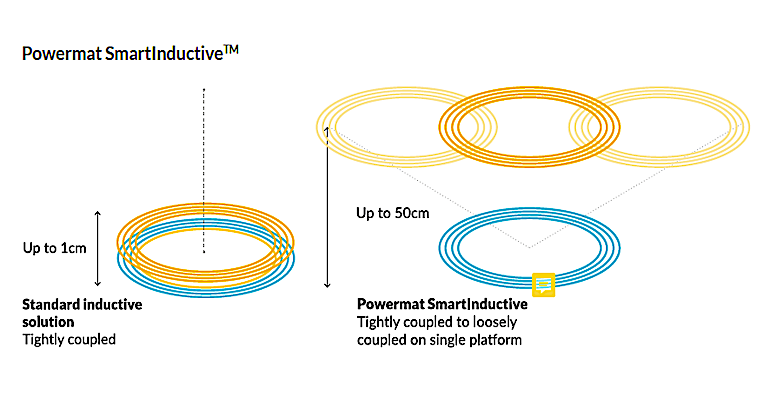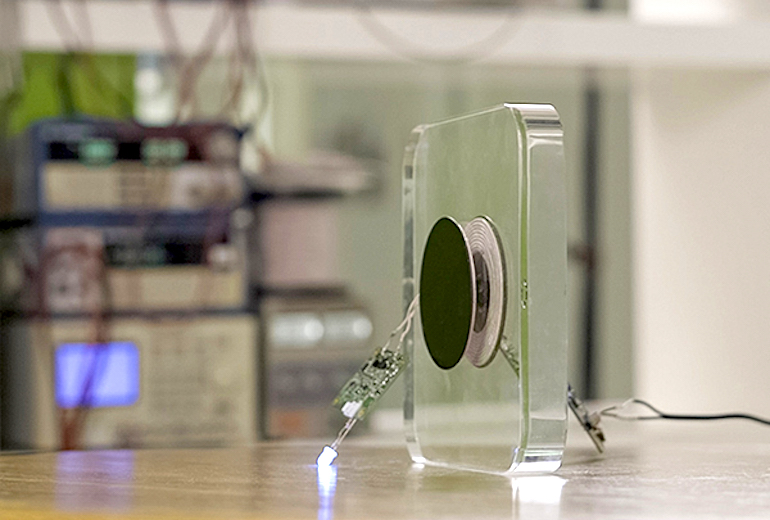The wiring harness in modern vehicles can stretch more than two miles and weigh as much as 125 lbs., so any technology that can help reduce this increasingly heavy and complex component in new vehicles will be welcome.
Powermat Technologies, the company behind the Qi wireless charging pads in General Motors’ cars is proposing that carmakers consider replacing some of these wires with wireless connections. These have the added benefit of being able to pass electric power through solid non-metallic parts of the car without needing holes that can let noise or moisture get where it shouldn’t be.
While the consumer electronics market of phone chargers will continue to drive wireless power transmission adoption, the automotive market is an increasingly important component of the industry.
In 2020, the global wireless charging market was $4.47 billion and it will grow to $34.65 billion by 2030, according to a report by Strategic Market Research. That’s a compound annual growth rate of 22.73 percent throughout the analysis period of 2020-2030.
The head of Global Thematic Investing Research for Bank of America Global Research, Haim Israel, named wireless power transmission to his list of 14 technologies of the future to know.
He described these as "the technologies that hit their growth targets have the potential to transform and disrupt multiple industries."
https://www.youtube.com/watch?v=MM0CF6ReBeM
That’s why Powermat is seeking to expand the application of wireless charging technology beyond today’s simple cell phone chargers, explained Powermat vice president of product engineering Aya Kantor. The company started in 2006 as a provider of wireless chargers for the industrial, medical, automotive, and consumer electronics markets.
“As the industry grows we see new opportunities to use telecom technology in other markets,” she said. The car is becoming more like a computer on wheels, with many sensors,” Kantor noted.
Powermat’s technology can project as much as 300 watts of power as far as 8 inches through solid non-metallic objects, according to Kantor. The company has applied for more than 200 patents on this technology and has been awarded patents on more than half of those already.

“There are a lot of sensors in places like wheels, windshields, and bumpers,” she observed. “We bring the ability to easily send power from the inside of the vehicle to the outside of the vehicle.”
Just as importantly, Powermat’s system can retrieve data from those sensors while providing them power. “When we talk about inductive charging, we have in-band communication,” said Kantor. “Today, we have up to 100 kilobits per second over the wireless band, bidirectional.” For data-intensive applications such as vehicle infotainment systems, Powermat has technology for 2 gigabit per second speed.
Of course, wires transmit power more efficiently than wireless transmission, and power use is critical in electric vehicles. Powermat’s technology is more than 90 percent efficient in most applications and can achieve better than 95 percent efficiency over short distances, Kantor explained.
An important ingredient of this is Powermat’s power management know-how that optimizes power use. “It is important to be efficiency in low-power applications as well as high-power applications,” she said.
Powermat works with OEMs, Automakers, and Tier-1 suppliers including General Motors, Visteon, and Harman International to deliver in-car wireless charging technology that is already embedded in more than 8 million vehicles.









Gloss